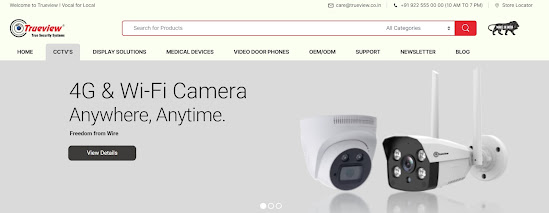Considerations When Choosing an Interactive Whiteboard for a Class
When you're looking for a new way to engage your students in the classroom, an interactive whiteboard can be a great option. But how do you know which one is right for you? Here are some considerations to keep in mind when choosing an interactive whiteboard.
Size: One of the most important considerations is the size of the interactive whiteboard. You'll need to make sure that it's large enough to be seen by all students in the classroom, but not so large that it takes up too much space.
Portability: If you plan on using your interactive whiteboard in different classrooms or even taking it with you on field trips, portability is an important consideration. Look for a whiteboard that is lightweight and easy to transport.
Connectivity: Another important consideration is how the interactive whiteboard connects to your computer. Some boards connect via USB, while others require a special cable or wireless connection. Make sure you know what type of connection your computer has before you purchase an interactive whiteboard.
Compatibility: In addition to connectivity, you'll also want to make sure that the interactive whiteboard you choose is compatible with the software you use in your classroom. Not all boards work with all software, so it's important to do your research before making a purchase.
Cost: Finally, you'll need to consider the cost of the interactive whiteboard. Some boards are less expensive than others, but keep in mind that cheaper boards may not have all the features you're looking for. It's important to find a balance between price and features when choosing an interactive whiteboard.
What is an interactive whiteboard and what are its benefits in a classroom setting?
An interactive whiteboard is a computer-connected device that allows users to control and manipulate digital content on a display. It can be used for a variety of purposes, including presentations, group collaboration, and individual instruction. Interactive whiteboards have many benefits in a classroom setting, including the following:
They engage students: Interactive whiteboards are highly engaging and can get students excited about learning.
They promote active learning: Unlike traditional chalkboards or whiteboards, interactive whiteboards encourage students to be actively involved in the lesson. Students can participate in activities and games, work together on projects, and more.
They're versatile: Interactive whiteboards can be used for a variety of purposes, from presenting information to playing educational games to collaborating on group projects.
They're easy to use: Interactive whiteboards are very user-friendly and can be used by teachers of all experience levels.
What are some considerations to keep in mind when choosing an interactive whiteboard?
Some things to consider when choosing an interactive whiteboard include size, portability, connectivity, compatibility, and cost. It's important to find a balance between price and features when selecting a board.
How do you choose the right one for your needs, and how much should you expect to pay for one?
The best way to choose the right interactive whiteboard is to consider your specific needs and budget. There is a wide range of prices for these devices, so be sure to do your research before making a purchase. You can expect to pay anywhere from $200 to $2000 for an interactive whiteboard.
What are some factors to consider when installing an interactive whiteboard in your classroom or school building?
Some factors to consider when installing an interactive whiteboard in your classroom or school building include the size of the room, the type of projector you'll be using, and the height of the ceiling. You'll also need to make sure that there is a power outlet nearby.
How can you make sure that everyone in the class gets the most out of using the board during lessons and activities?"
There are a few things you can do to make sure that everyone in the class gets the most out of using the board during lessons and activities. First, make sure that you're familiar with the features and functions of the board before using it in front of students. Second, give clear and concise instructions on how to use the board. Finally, be sure to provide ample opportunities for students to practice using the board.
Are there any potential downsides to using interactive whiteboards in a classroom setting, and how can these be overcome?
There are a few potential downsides to using interactive whiteboards in a classroom setting. First, they can be expensive, so schools may need to purchase multiple boards for each classroom. Second, they require a certain amount of technical expertise to use effectively. Finally, they can be distracting for some students if not used properly. However, these downsides can be overcome by carefully selecting and training teachers on how to use the boards effectively.
How do teachers feel about using interactive whiteboards in their classrooms - are they helpful tools or just another thing to distract from teaching?
Overall, teachers feel positive about using interactive whiteboards in their classrooms. They find that the boards are helpful tools that can engage students and promote active learning. However, some teachers caution that the boards should be used sparingly and only when they genuinely add value to the lesson. Others worry that the boards may be distracting for some students if not used properly.




Comments
Post a Comment